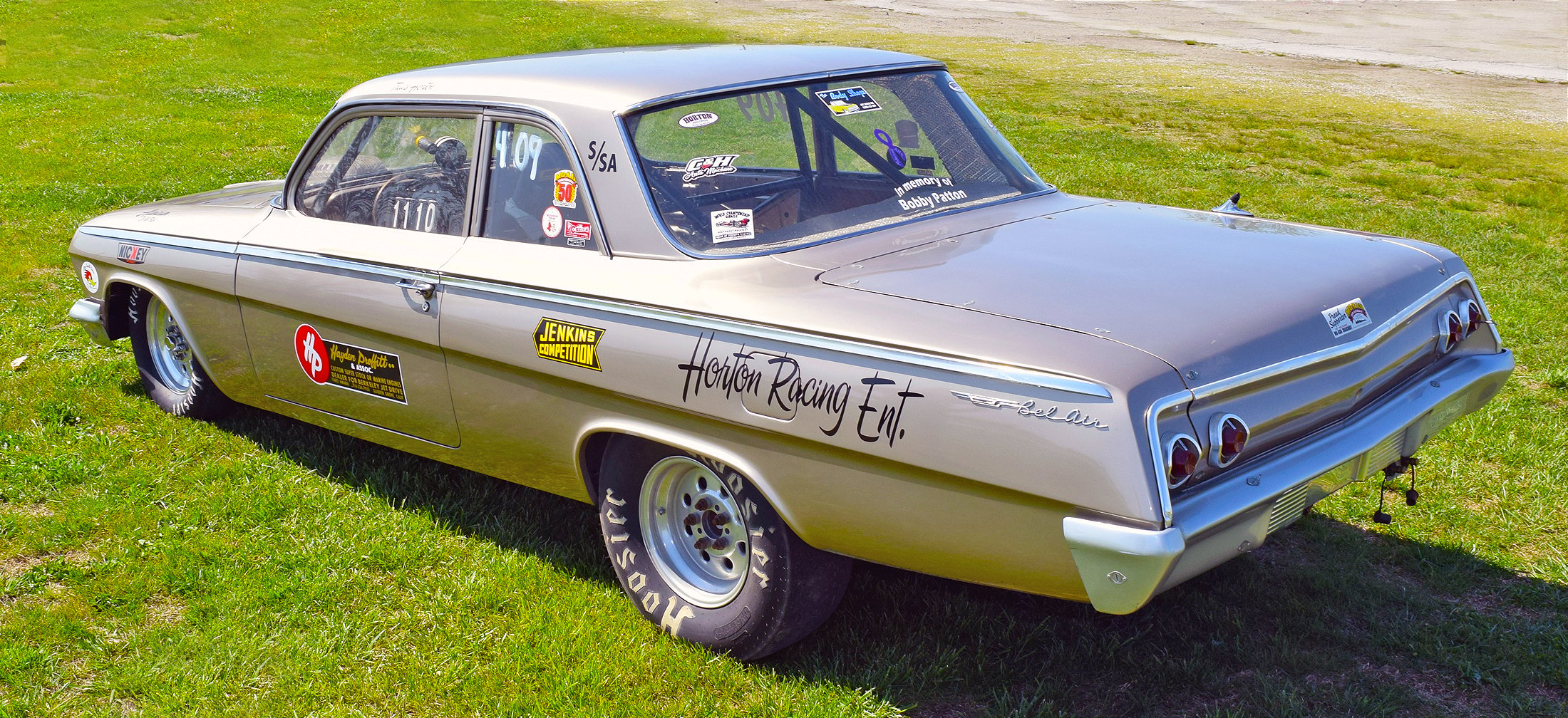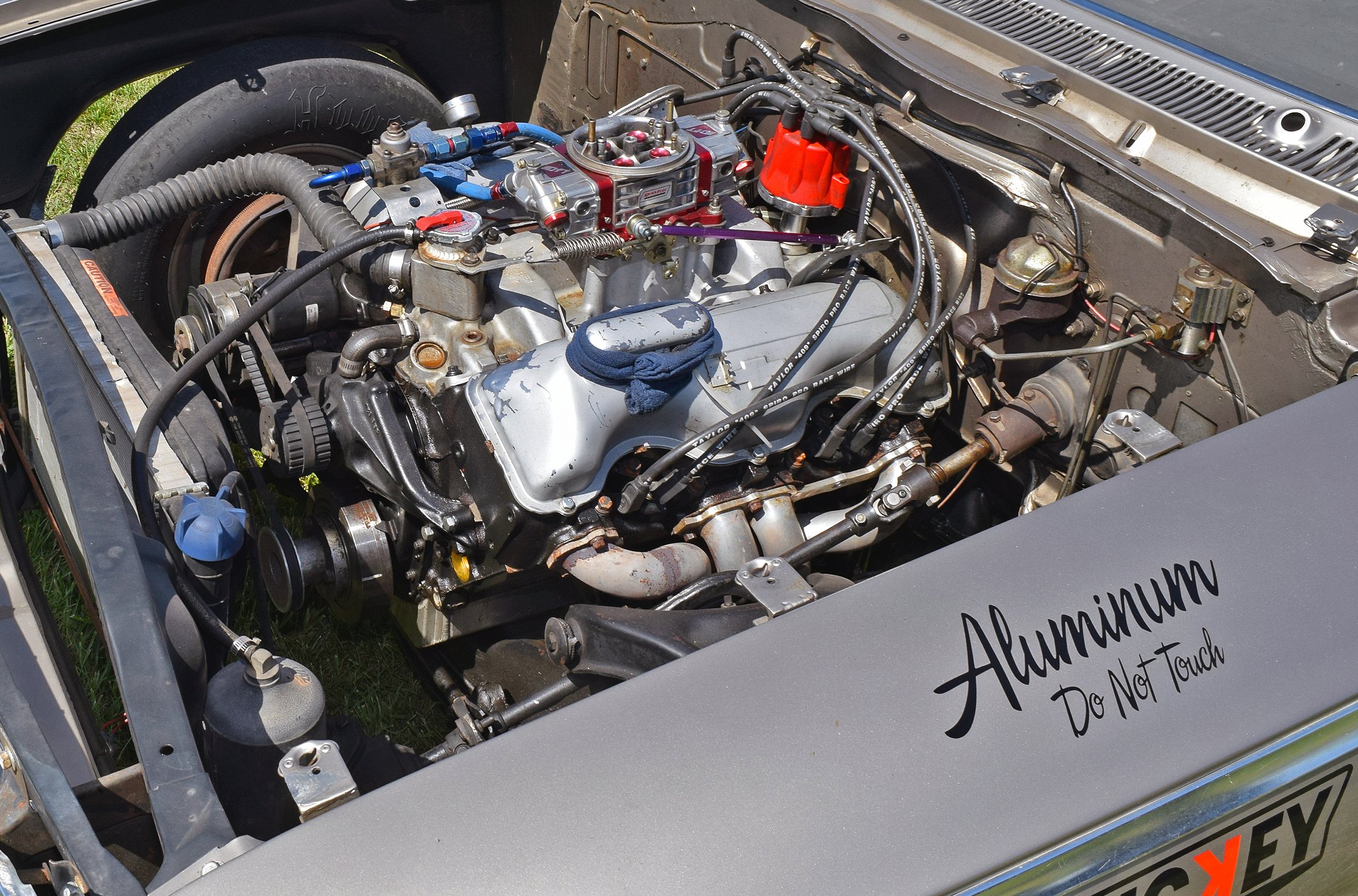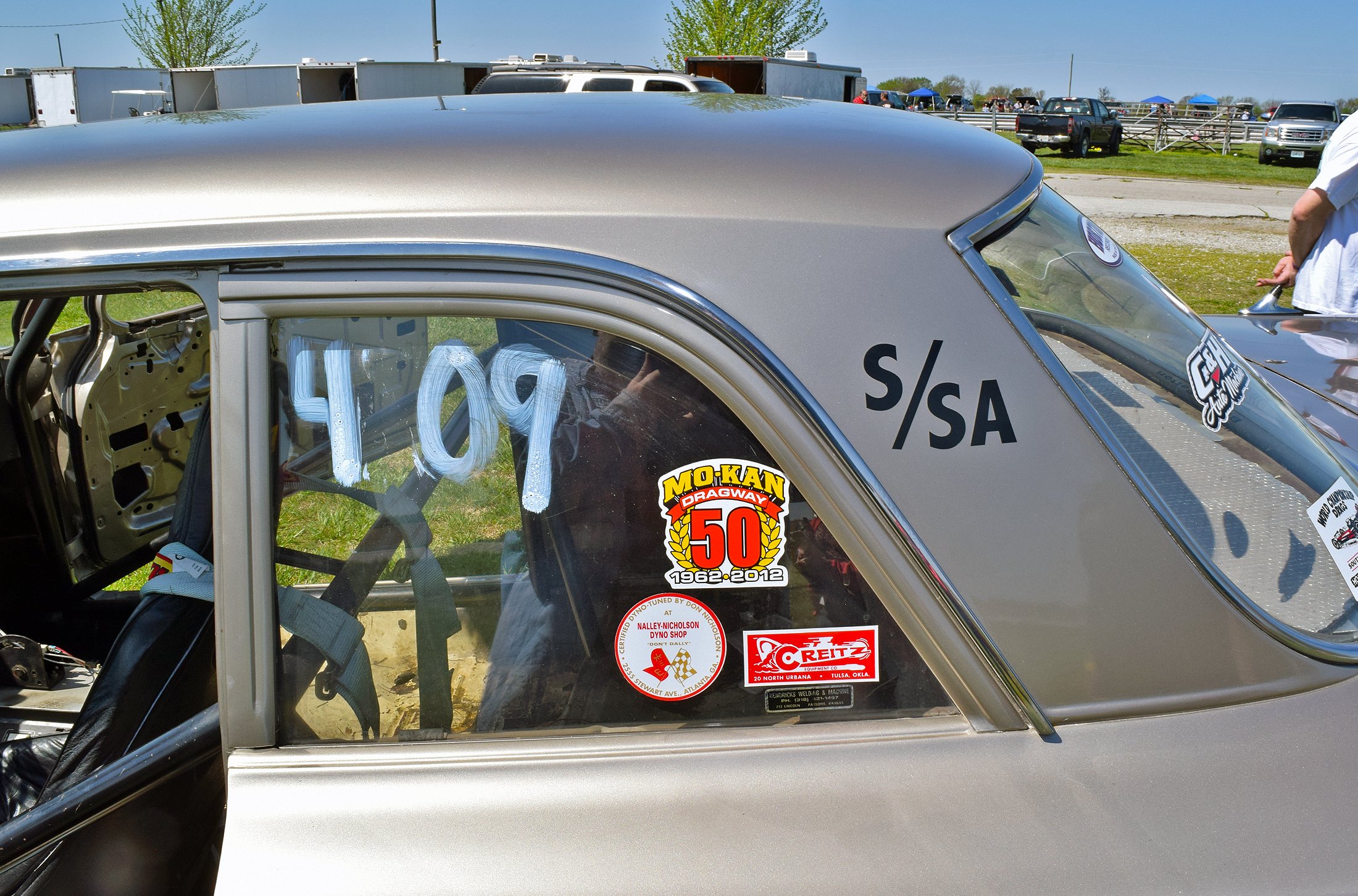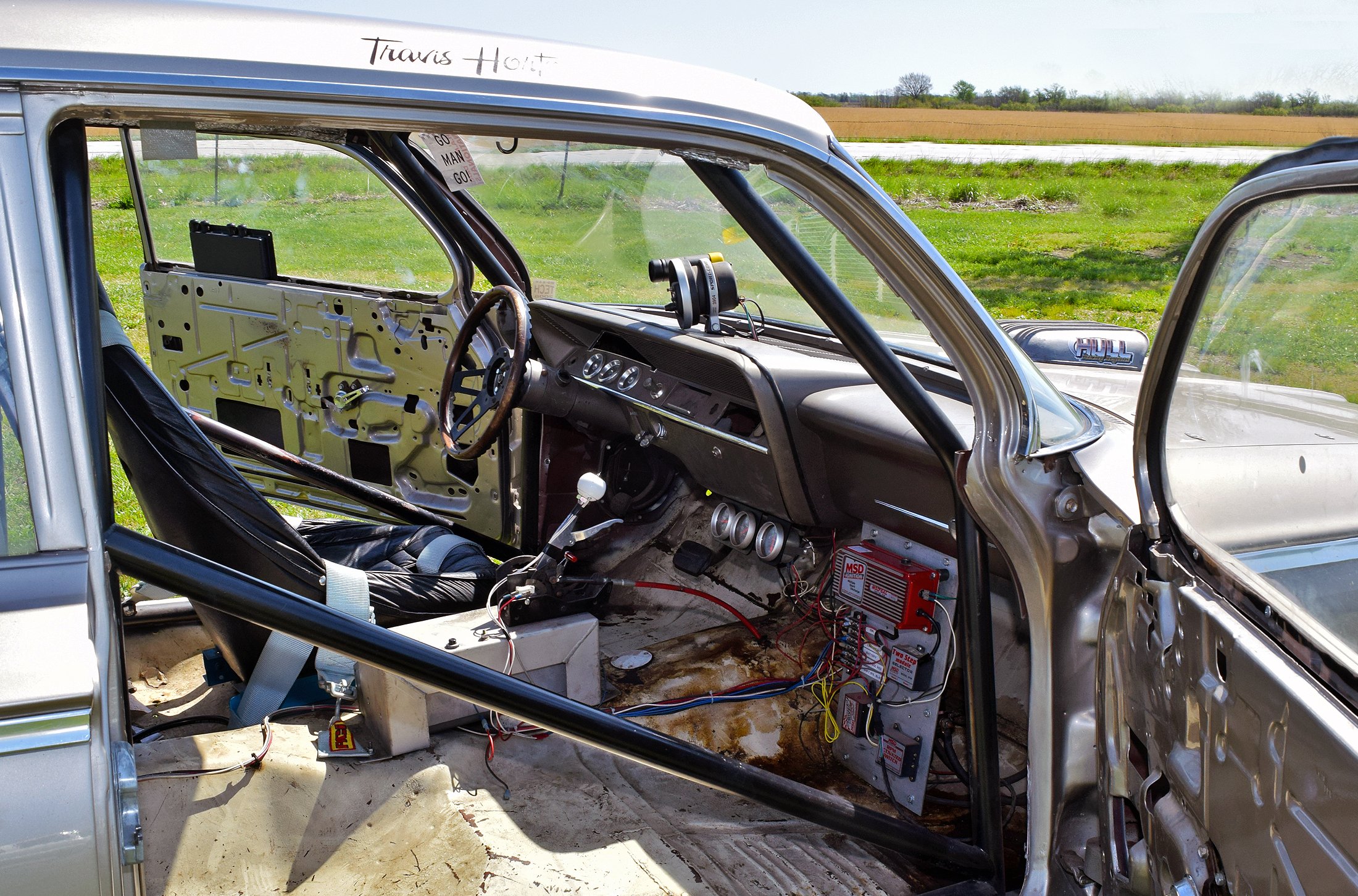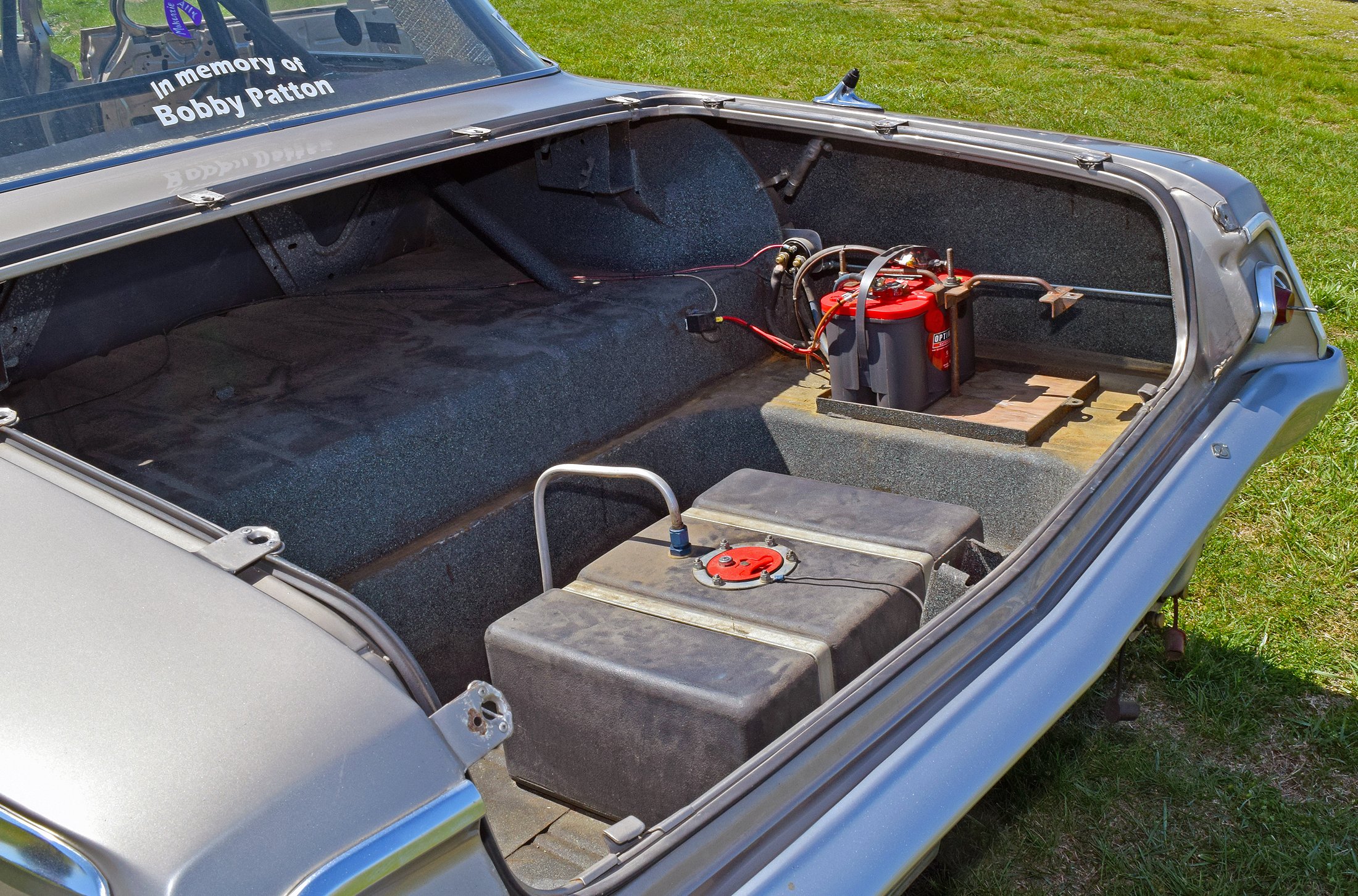What first appears to be a piece of compelling Bow Tie history, is actually a 1962 Chevrolet Bel Air that was found on the streets of Floyd and Travis Horton’s hometown of Pittsburgh, Kansas. This story literally begins with a little old lady driving a cherry Chevy back-and-forth to her hair stylist job.
“I was kind of born into racing,” Travis Horton tells us. “My dad, Floyd, has always been a car guy. He and a friend built a 1955 Chevy in the late ’60s that they raced for years, so I’ve been around the dragstrip my entire youth. In roughly 1990, we started building a tube-chassis 1961 Bel Air. I mentioned to my dad that we ought to turn this ’62 into a nostalgia-class race car too. We had many parts laying around we could use, and it snowballed into building two race cars at once.”
The Hortons had a wealth of full-size vintage Chevy parts in their shop, which was a blessing. “When we first started racing the car, the suspension was bone stock and it had the original rearend. A differential with a 5.57-ratio gearset was the only posi unit we had at the time. That was really too low, but we started improving the car every couple of years when it seemed like something was on the verge of breaking,” Travis added with a chuckle.
The rare "409" Chevrolet W-engine is actually a 348 block, bored and stroked to 410 cubic inches. It is topped by a pair of factory, cast-iron 690 heads with Manley 2.25-inch stainless intake valves and Ferrea 1.75-inch stainless exhaust valves.
When looking at the car, what immediately commands your attention is the W-engine valve covers and the “Aluminum, Do Not Touch” writing on the front fenders. Although not a historical aluminum-fender rarity, the Hortons say they have a lot of fun with the period look of the car.
The W-engine started out as a 348 block that was bored to create 410 cubic inches. Hull Racing Engines built the mill using Ross Racing 11:1 pistons, Eagle Specialty Products 6.385 H-beam rods, and JE piston rings. A uniquely modified Chevrolet steel crank with a 3.76-inch stroke was custom machined by Ohio Crankshaft, and is covered with a Stef’s aluminum oil pan. A pair of factory, cast-iron 690 heads with Manley Performance 2.25-inch stainless intake valves and Ferrea Racing 1.75-inch stainless exhaust valves make up the airflow modulation portion of the unique Chevy powerplant.
I ended up winning the track championship because of ‘ol trusty here. – Travis Horton
The camshaft is a custom, solid-roller stick created by Straub Technologies. Other valvetrain specifics include Scorpion 1.7-ratio big-block Chevy roller rockers, Tony Shafer guideplates, and Morel Black Mamba lifters, springs, and titanium retainers. Tony Shafer from Day Automotive highly modified the factory four-barrel intake manifold. The unique Chevy is topped off with a Quick Fuel Technology 1050cfm 4150-style carburetor, MSD Performance distributor combined with Taylor Cable Products 409 wires, and Autolite race plugs.
The 8-point rollcage and spartan interior continue to create the vintage Stock Eliminator vibe.
It is ironic that a modified version of the two-speed Powerglide transmission, just like the one originally used in the car 56-years ago, is still the durable transmission of choice. Grant Carson from Speedy’s Automotive built this ‘glide with a 1.76 low-gear, and it’s outfitted with a Transmission Specialties 8-inch spragless torque converter and Hays flexplate.
When it came time to improve the Bel Air’s chassis, an 8-point mild-steel cage by Steve Stone was fabricated within the relatively stock chassis and body. A fiberglass hood, trunk, bumpers, and Lexan side glass help shave weight. The body was painted with a factory Fawn Beige hue by Kent Kinnamon and Eric Barnes of The Body Shop in Parsons, Kansas. Wright Signs & Graphics of Parsons, applied the period lettering and decals.
The stock dashboard is still intact and outfitted with additional Autometer tach, water, oil, and volt gauges. In true era-specific fashion, the interior is minus carpeting and door panels, and driver “comfort” is via a Jaz racing seat. A Grant steering wheel and B&M shifter make up the remaining amenities.
Big trunk Chevys are a thing for father and son Horton. Their primary race car is a tube chassis 1961 Bel Air.
The factory three-link rear-suspension design is intact, but the rearend is now a 9-inch unit fabricated by Moser Engineering, using OE mounting points and UMI upper and lower control arms. A Mark Williams Enterprises aluminum through-bolt center section, lightweight spool, and Richmond 4.33 gears are mated to Moser 35-spline axles.
Original coil springs are used front and rear, and QA1 Performance adjustable drag shocks are positioned on all four corners. There is also an airbag within the right rear coil spring. This is a proven race application used on Chevrolet three-link suspensions for many years. “We normally put 30-psi in the airbag,” Travis notes. “I found that is where the launch likes it, and that’s where I leave it.”
Weld Draglite wheels are used all around, with Hoosier 9×30 slicks on the rear. An interesting note is the use of factory-style drum brakes all around. Though the car is a consistent 11-second hot rod, Travis defends the choice. “We had a big-block Chevy that ran 9.90s at 136 mph in the quarter-mile,” he says. “Those little drum brakes stopped it just fine.”
The Hortons primarily compete with their other car, a 1961 Bel Air, which is a tube-chassis drag car, and the ’62 primarily sees occasional weekend duty at nostalgia or specialty events. Travis does note the car’s reliability. “Last season, I raced her exclusively for the first half of the season while I was getting a new engine completed for the other car. I ended up winning the track championship because of ‘ol trusty here.” he said.

